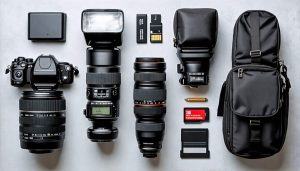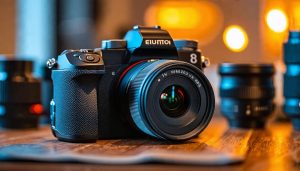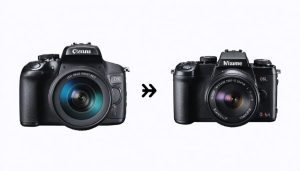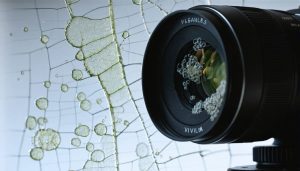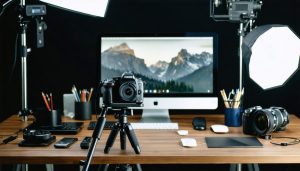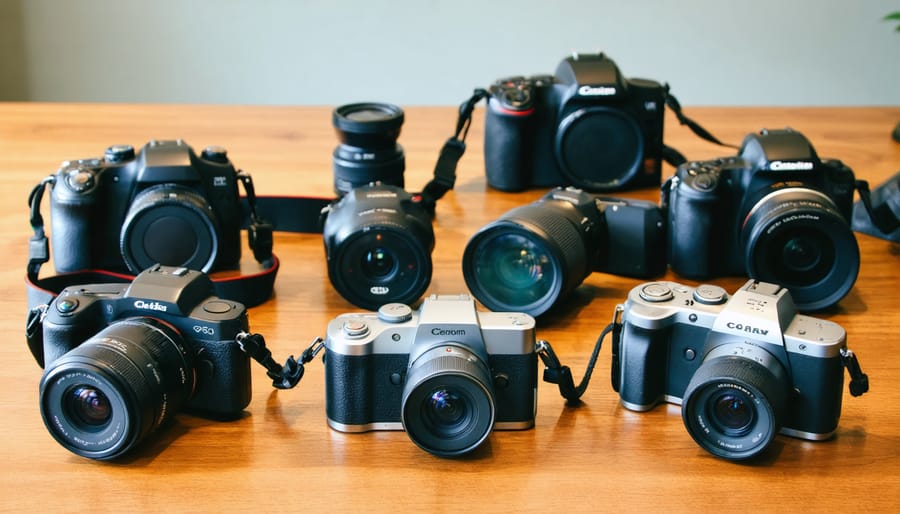
360-degree cameras range from $200 budget models to $5,000+ professional rigs, with most consumer-friendly options falling between $300-800. Before investing in immersive photography, understand that quality increases significantly at key price points: entry-level ($200-400) for basic 360° photos, mid-range ($500-1,000) for high-resolution video capabilities, and professional ($1,000+) for broadcast-quality footage. Factor in essential accessories when calculating total costs – memory cards, protective cases, and mounts typically add $100-200 to your initial purchase. Once you’ve selected your camera, setting up your 360-degree camera properly ensures you maximize your investment and capture stunning spherical content from day one.
Entry-Level 360 Cameras ($200-500)
What You Get in This Price Range
In this price range, you’ll find 360-degree cameras that strike a balance between functionality and affordability, making them excellent budget-friendly camera options for both beginners and enthusiasts. Most models offer 4K video resolution, though some may reach up to 5.7K, providing crisp and detailed spherical footage. You can expect features like basic image stabilization, smartphone connectivity via Wi-Fi or Bluetooth, and user-friendly mobile apps for editing and sharing.
These cameras typically come with dual lenses offering 180-degree field of view each, automatic stitching capabilities, and basic waterproofing (usually up to 5 meters). You’ll find standard shooting modes including photo, video, and time-lapse, along with simple live-streaming capabilities to popular platforms.
Storage options usually include microSD card support, and battery life generally ranges from 60 to 90 minutes of continuous recording. While these cameras may lack advanced features like HDR video or professional-grade stabilization, they deliver reliable performance for most casual and semi-professional uses, from virtual tours to action sports documentation and social media content creation.
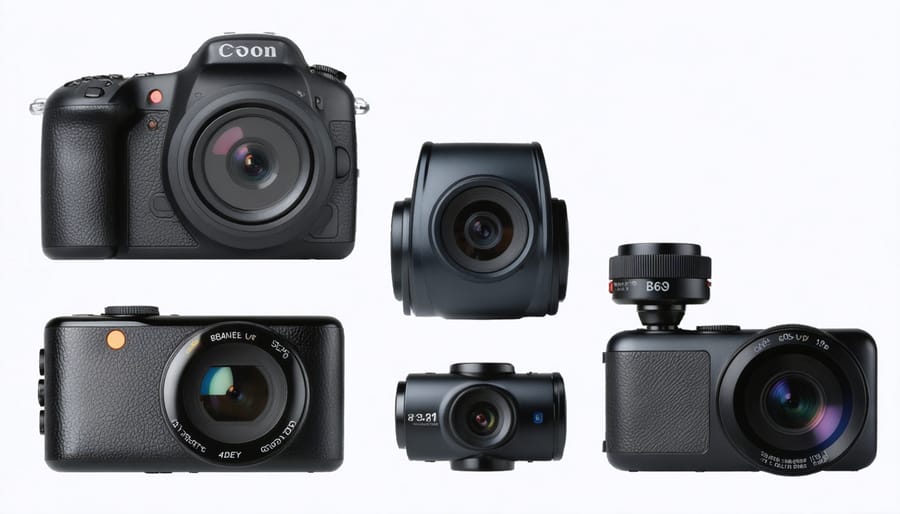
Popular Models and Their Actual Costs
Looking at today’s market, there are several standout 360-degree cameras that offer excellent value at different price points. The Insta360 ONE RS, priced around $299, represents a solid entry point with its modular design and 5.7K video capabilities. For those seeking simplicity, the Ricoh Theta SC2 comes in at approximately $269 and offers user-friendly operation with 4K video recording.
Moving up the ladder, the GoPro MAX, available for roughly $399, delivers exceptional image stabilization and rugged build quality. The Insta360 ONE X2 sits in a similar bracket at $429, offering advanced features like FlowState stabilization and AI editing capabilities.
For professional-grade results, the Kandao QooCam 8K retails for around $599, while the Insta360 Pro 2 represents the higher end at approximately $3,499. This professional model delivers 8K 3D video and advanced stitching capabilities.
Budget-conscious buyers might consider the Vuze XR, typically available for $299, which doubles as both a 360-degree and stereoscopic 3D camera. Meanwhile, the compact Madventure 360, priced at around $199, offers a more affordable entry point without sacrificing essential features.
These prices reflect current market rates but may vary depending on your location and any ongoing promotions or sales.
Mid-Range Options ($500-1000)
Key Features Worth the Extra Cost
When investing in a higher-end 360-degree camera, several premium features can justify the steeper price tag. Advanced models often offer superior resolution, with some cameras capable of capturing 8K video and 32MP+ photos, resulting in incredibly detailed spherical content. The improved sensor quality also translates to better low-light performance, which is crucial for indoor and evening shoots.
Professional-grade stabilization is another standout feature worth the investment. High-end models utilize sophisticated gyroscopic stabilization systems that produce smooth footage even during active movement, making them ideal for action sports or walking tours. Many premium cameras also offer advanced HDR capabilities, automatically blending multiple exposures for balanced lighting in challenging conditions.
Audio quality sees significant improvements in higher-tier models, with spatial audio recording through multiple microphones providing immersive sound that matches the visual experience. Premium models often include professional-grade editing software and live-streaming capabilities, allowing for immediate content sharing and advanced post-processing options.
Durability is another key consideration, with better-built cameras offering weather sealing, robust construction, and sometimes even underwater capabilities without additional housing. Advanced models also typically provide more manual controls, allowing experienced users to fine-tune settings like exposure, white balance, and ISO for optimal results in any situation.
Lastly, premium cameras often feature more sophisticated stitching algorithms, resulting in nearly seamless 360-degree content with minimal distortion or visible joining lines.
Best Value Models in This Category
When it comes to getting the most bang for your buck, several 360-degree cameras stand out in the mid-range market. The Insta360 ONE X2, priced around $429, offers exceptional value with its stellar image stabilization, 5.7K video resolution, and robust mobile editing app. It strikes an ideal balance between features and affordability for both beginners and experienced creators.
The GoPro MAX, typically available for $499, delivers outstanding performance with its dual-lens system, horizon leveling, and GoPro’s renowned durability. While slightly pricier than some competitors, its user-friendly interface and reliable performance justify the investment, especially for active content creators.
Another standout is the Ricoh Theta X, hovering around $799. Though at the higher end of mid-range, it offers premium features like a touchscreen display, replaceable battery, and excellent low-light performance. This camera particularly appeals to real estate professionals and virtual tour creators who need reliable, high-quality output.
For those on a tighter budget, the Kandao QooCam 8K at approximately $599 provides impressive 8K resolution and raw photo capability, making it an excellent choice for photographers transitioning into 360-degree imaging. Its feature set rivals more expensive models, though its app experience isn’t quite as polished as market leaders.
Each of these models represents strong value, offering professional-grade features without stepping into the premium price category.
Professional-Grade 360 Cameras ($1000+)
Professional Features and Capabilities
High-end 360-degree cameras come packed with sophisticated features that justify their premium price tags. These cameras, which often complement other professional photography equipment, offer capabilities that serious content creators and businesses find invaluable.
Advanced models typically feature superior image sensors that capture stunning 8K resolution footage, ensuring crystal-clear details even when viewed on large displays. They often include sophisticated stabilization systems, like 6-axis gyroscopic stabilization, which delivers smooth footage even in challenging shooting conditions.
Professional-grade 360 cameras also excel in low-light performance, thanks to larger sensors and advanced processing capabilities. Many feature HDR recording, allowing for balanced exposure in challenging lighting situations. Raw shooting capabilities give editors maximum flexibility in post-production, while high-speed recording options enable slow-motion effects in immersive footage.
Connectivity features are equally impressive, with WiFi 6 support, live streaming capabilities, and remote operation through smartphone apps. Some models include professional audio inputs for external microphones, ensuring broadcast-quality sound to match the visuals.
Advanced stitching algorithms in premium models create seamless 360-degree footage with minimal artifacts, while built-in AI features can automatically track subjects and create compelling compositions. These cameras often include weather sealing and robust build quality, making them reliable tools for professional projects in various conditions.
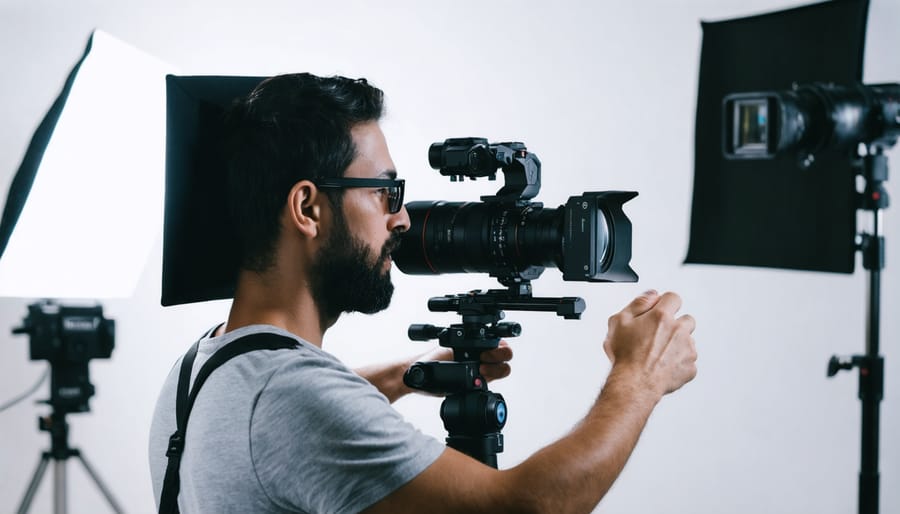
Investment Analysis for Pro Users
For professional users, investing in a 360-degree camera requires careful consideration of return on investment (ROI). Real estate professionals can typically recoup their investment within 3-6 months through increased property listings and higher engagement rates, as virtual tours have become a client expectation rather than a luxury.
Event photographers and videographers can expect to charge a 20-30% premium for 360-degree content, making a $1,000-3,000 camera investment profitable within 10-15 bookings. Wedding photographers, in particular, find that offering immersive venue tours and ceremony captures can justify a $500-800 increase in their standard package pricing.
For content creators and YouTubers, the ROI calculation should factor in potential audience growth. Channels incorporating 360-degree content typically see a 15-25% increase in viewer engagement, which can translate to higher ad revenue and sponsorship opportunities. Production companies report that offering 360-degree capabilities has opened doors to corporate clients with 40-50% higher project budgets.
Consider the industry you’re serving: tourism businesses can charge 25-35% more for virtual experiences, while architectural firms use 360-degree documentation to reduce site visits by up to 60%, saving both time and travel costs. When calculating your ROI, factor in additional expenses like storage solutions, editing software subscriptions, and potential equipment upgrades every 2-3 years to stay competitive in the market.
Hidden Costs to Consider
Essential Accessories
To get the most out of your 360-degree camera, you’ll need several essential photography accessories that can add to your total investment. A sturdy tripod is crucial, typically costing between $50-150 for a reliable model that can support your camera steadily. Memory cards are another vital component – high-speed SD cards with at least 128GB capacity range from $30-80, and you’ll likely want multiple cards for extended shooting sessions.
For protection and portability, a quality carrying case runs about $20-50, while additional batteries can cost $20-40 each. If you plan on underwater shooting, a waterproof housing might set you back $100-300, depending on your camera model. For mounting options, various clamps and suction cups range from $15-50 each.
Consider also investing in a good cleaning kit ($15-30) to maintain your camera’s lenses and sensors. If you’re planning to edit and share your 360-degree content professionally, you might need specialized software subscriptions, which can cost anywhere from $10-50 monthly.
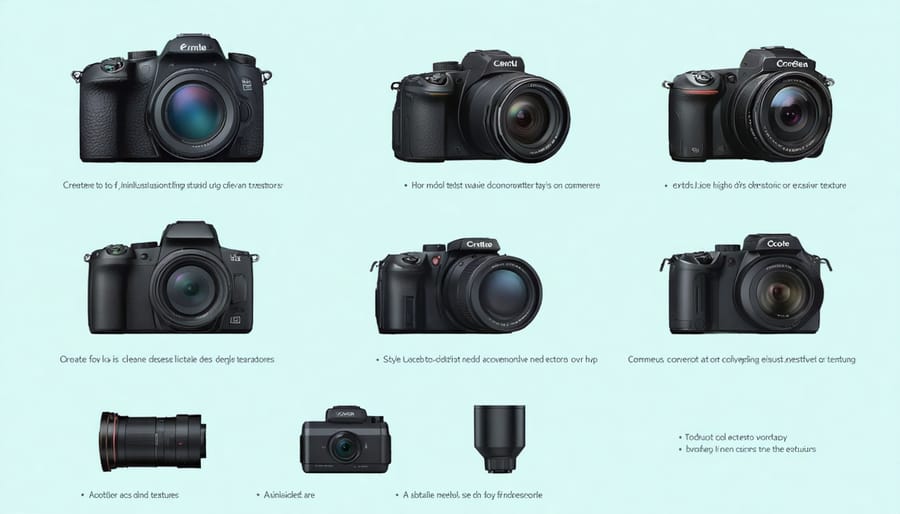
Storage and Software Requirements
When investing in a 360-degree camera, don’t overlook the additional costs of storage and software. Most 360 cameras record in 4K or higher resolution, meaning your footage will consume storage space quickly. A single minute of 360-degree video can take up to 1GB of space, so consider investing in high-capacity SD cards (64GB-256GB) ranging from $30-100.
For long-term storage, external hard drives or cloud storage solutions are essential. A reliable 2TB external drive costs around $60-100, while cloud storage subscriptions typically run $10-20 monthly for sufficient space to maintain your 360 content library.
Post-processing software is another crucial investment. While many 360 cameras come with basic editing apps, professional-grade software like Adobe Premiere Pro ($20.99/month) or specialized 360 editing tools like Mistika VR ($50/month) provide more advanced features. Some manufacturers offer their premium editing software as one-time purchases, ranging from $50-200.
Remember to factor in the processing power of your computer – editing 360-degree content requires significant computational resources, and you might need to upgrade your system for smooth editing workflow.
Making Your Decision: Cost vs. Need
When deciding on your 360-degree camera budget, it’s essential to align your investment with your specific needs and usage scenarios. For casual users looking to capture family events or occasional travel memories, entry-level models in the $200-300 range often provide sufficient quality and features. These cameras typically offer decent resolution and basic sharing capabilities, perfect for social media enthusiasts.
However, if you’re planning to create professional virtual tours or high-quality content for clients, investing in a mid to high-end model ($500-1000) makes more sense. The enhanced image quality, advanced stabilization, and professional features will pay dividends in your final output. Real estate photographers, for instance, often find that spending more initially leads to better client satisfaction and more bookings.
Consider your learning curve and commitment level. Starting with a more affordable model allows you to explore 360-degree photography without a substantial financial risk. As your skills and needs evolve, you can upgrade to more sophisticated equipment. Buying pre-owned camera gear is also worth considering, especially for higher-end models.
Remember that the initial camera cost isn’t your only expense. Factor in accessories like tripods, memory cards, and potentially additional software. For professional use, consider the return on investment – will the camera’s features help you generate income or save time in post-processing? Balance these factors against your budget to make an informed decision that serves your needs without stretching your finances too thin.
Choosing the right 360-degree camera ultimately depends on your specific needs and budget. As we’ve explored, these innovative devices range from affordable entry-level options around $200 to professional-grade systems exceeding $3,000. For hobbyists and content creators just starting their 360-degree journey, mid-range cameras between $300-$500 offer an excellent balance of features and affordability, providing solid image quality and user-friendly interfaces.
Remember that the initial camera cost is just part of the equation. Factor in essential accessories like tripods, memory cards, and protective cases when planning your budget. Additionally, consider any subscription costs for specialized editing software or cloud storage services that might be necessary for your workflow.
For professionals and businesses, investing in higher-end models makes sense when image quality and reliability are paramount. These cameras often come with advanced features like live streaming capabilities, better low-light performance, and superior stitching algorithms that justify their higher price tags.
Before making your purchase, we recommend thoroughly researching current models within your budget range, reading user reviews, and if possible, testing the camera firsthand. Consider starting with a mid-range model if you’re new to 360-degree photography – this allows you to learn the basics while maintaining good image quality, with the option to upgrade later as your skills and needs evolve.

